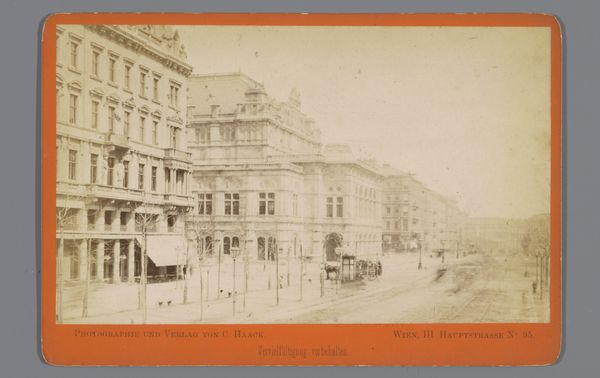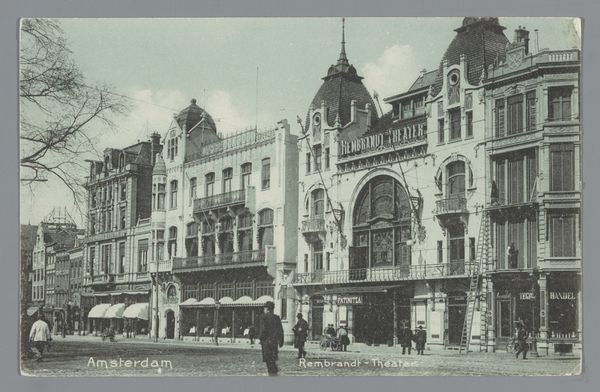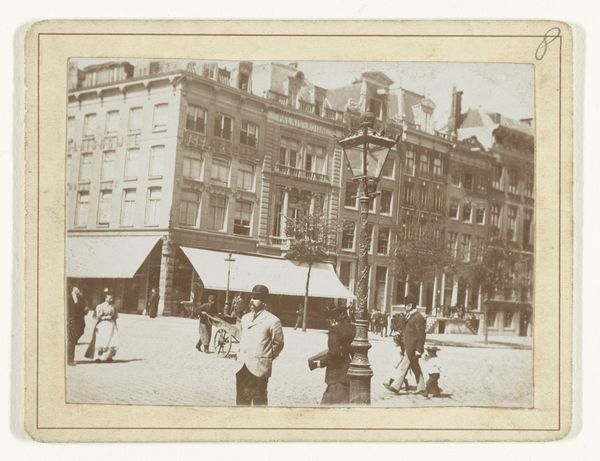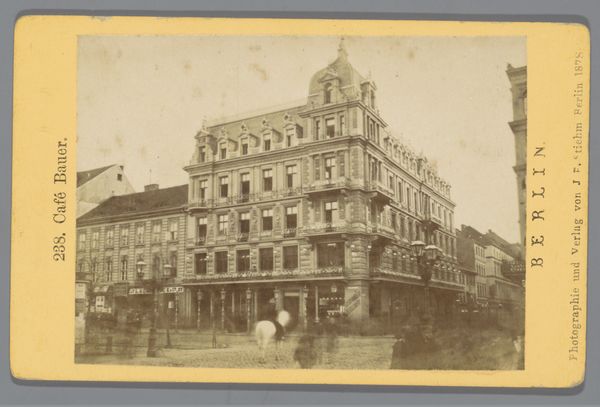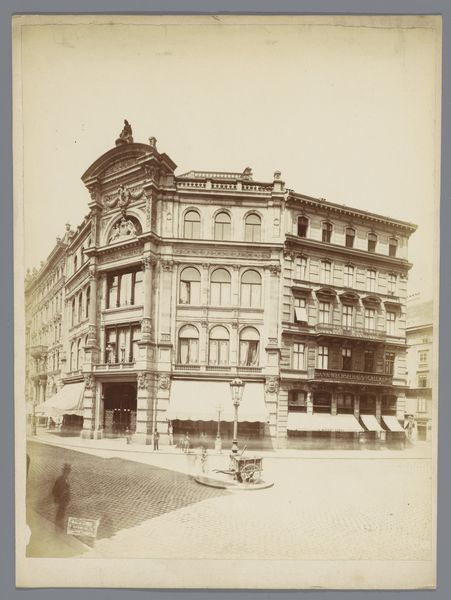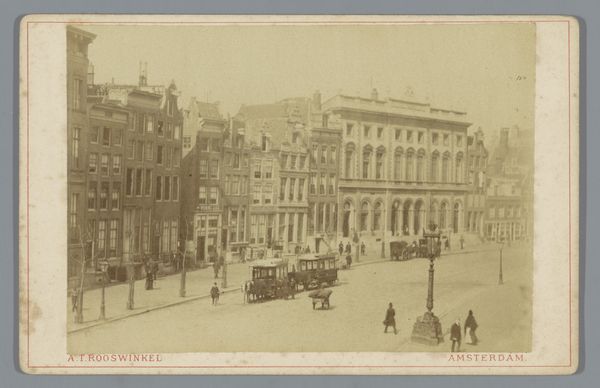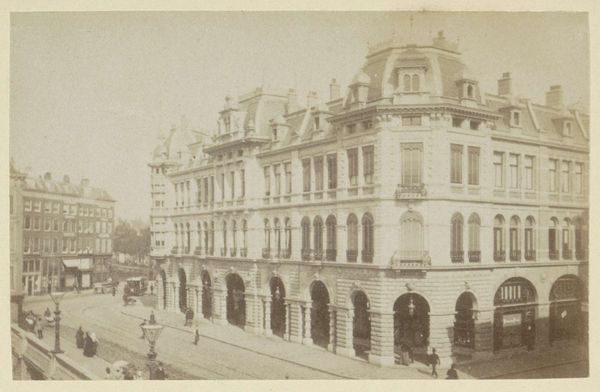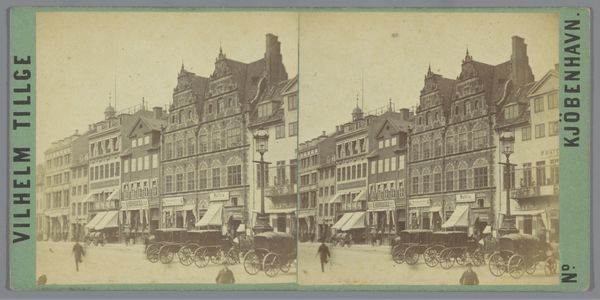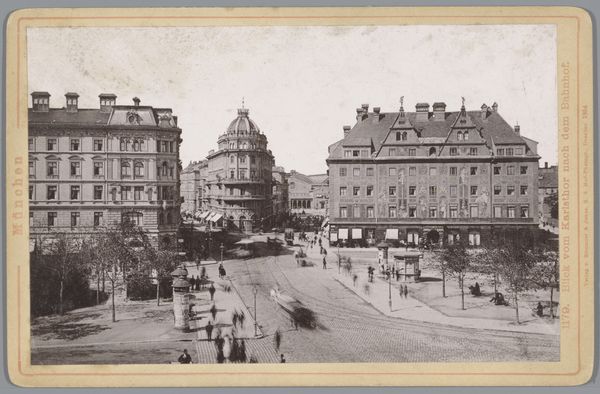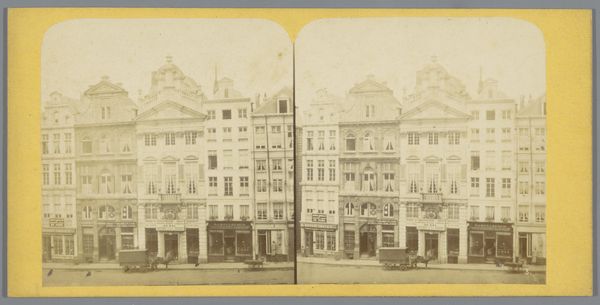
print, photography
#
art-nouveau
# print
#
street-photography
#
photography
#
coloured pencil
#
cityscape
#
watercolour illustration
Dimensions: height 87 mm, width 137 mm
Copyright: Rijks Museum: Open Domain
Curator: Looking at this photographic print titled "Amsterdam, Rembrandtsplein," likely from somewhere between 1911 and 1919 by Trenkler & Co., I’m immediately drawn into a very different era of urban life. Editor: Oh, absolutely, there's this hushed, sepia-toned stillness despite it being a bustling cityscape. It’s romantic, but tinged with melancholy, isn't it? The tram car, almost toy-like, evokes such a longing for simpler times. Curator: Yes! There's this real sense of a society on the cusp of massive change. This part of Amsterdam would have been in the heart of significant cultural shifts. The details in the architecture—you can see the emerging art nouveau influences— speak volumes about the period's aesthetics and ambitions. But it's more than pretty façades; it's a snapshot of early consumer culture as well. Editor: Indeed, if we consider Benjamin’s theories on the arcades, this photograph can be interpreted as a nascent form of the “dream collective,” as shopping and consumerism began to redefine urban life. These emerging buildings created physical spaces of consumption, and reflect larger structural inequities within Dutch society that, sadly, haven't gone away. Also, seeing all of these white men in their suits and ties brings up so many thoughts regarding patriarchy in urban planning… Curator: Hmmm… That makes me wonder though about what’s deliberately *not* included in the frame. But that’s interesting what you said, because for me, the photographer chose this viewpoint with a precise intent, right? To immortalize, maybe even elevate, the new Amsterdam. Editor: Perhaps it was also meant to invite the viewer to imagine themselves a part of this carefully curated space of modernity. To think of urban photography not just as historical record, but as an active agent shaping perception. It feels really self-aware, almost like an old film reel. Curator: I get it, I think, I can really see this photograph opening up dialogues about history and the complex tapestry of city life and the people making it all run. Editor: Precisely! It urges us to reflect critically on who shapes our cities and who is rendered invisible in the narratives they present.
Comments
No comments
Be the first to comment and join the conversation on the ultimate creative platform.
